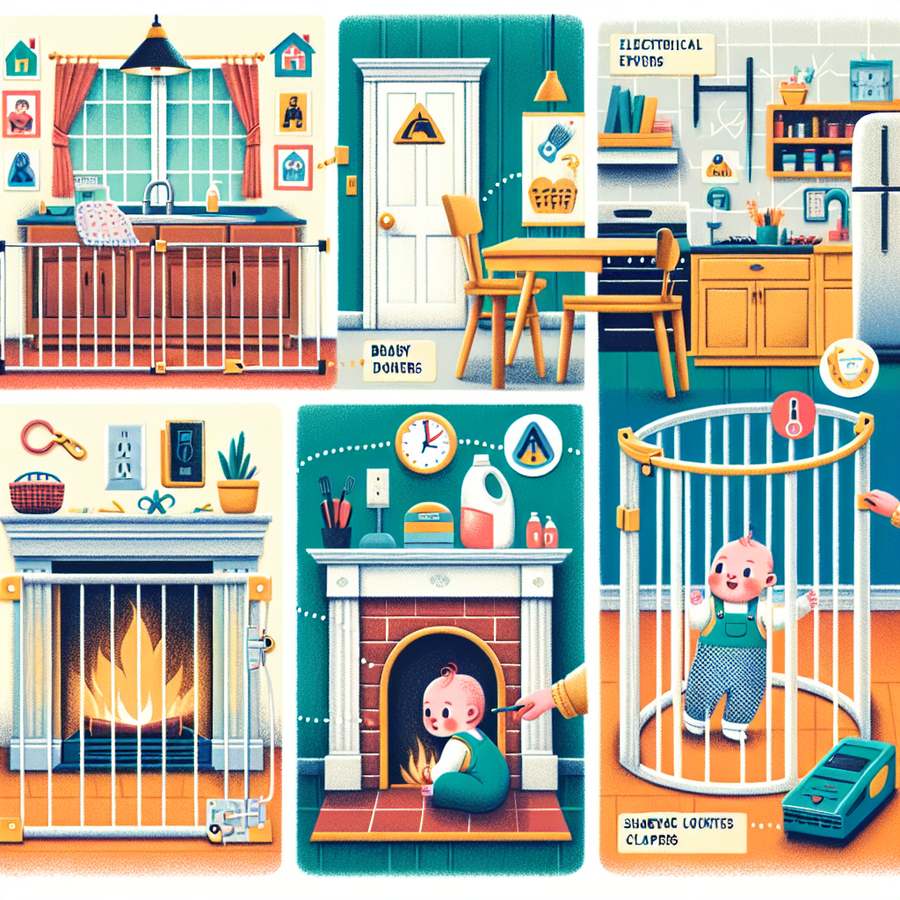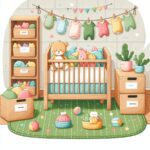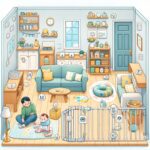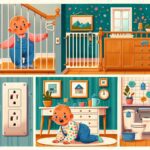When it comes to ensuring the safety of our little ones, understanding common household hazards for babies and how to childproof is paramount. As babies grow, their curiosity does too, leading them to explore every nook and cranny of their environment. This exploration, while essential for their development, can put them at risk if their surroundings aren’t properly secured. From sharp corners to small objects and toxic substances, the average home is filled with potential dangers for a curious infant. Today, we delve deep into the common household hazards for babies and how to effectively safeguard your home, turning it into a safe haven for your little explorer.
Identifying Common Household Hazards for Babies
Before we can protect our children, we need to know what dangers lurk within our homes. Common household hazards for babies often include small objects that they can choke on, sharp edges that can cause cuts or bruises, easily accessible cabinets and drawers that may contain harmful substances, unsecured furniture that can topple over, and unprotected electrical outlets. Additionally, drowning hazards such as bathtubs, toilets, and even buckets of water pose significant risks. Recognizing these dangers is the first step towards a safer home environment for your baby.
Moreover, it’s important to be aware of the invisible threats such as air quality, which can be compromised by toxic cleaning products or lead paint in older homes. Ensuring your home is well-ventilated and opting for non-toxic cleaning products can mitigate these risks. Furthermore, the risk of sudden infant death syndrome (SIDS) can be reduced by following safe sleep practices, such as placing your baby on their back to sleep and keeping their sleep area free of soft bedding and toys.
Common Household Hazards for Babies and How to Childproof
Childproofing your home effectively requires a comprehensive approach, starting with securing furniture and appliances to the wall to prevent tipping. Use safety gates to block off areas like kitchens and staircases, and install window guards to prevent falls. Keep hazardous substances, including cleaning supplies and medications, out of reach in locked cabinets. Electrical outlets should be covered with safety plugs, and cords should be kept out of reach to prevent strangulation or electrical hazards.
Beyond physical modifications, establishing a safe environment also involves constant supervision and educating yourself on emergency procedures. Familiarizing yourself with infant CPR and first aid can be lifesaving in crisis situations. Consider taking a course or reading up on infant CPR and first aid to prepare yourself adequately. Additionally, employing baby monitors can offer peace of mind while your baby sleeps or plays in another room. For recommendations, check out best baby monitors.
Advanced Childproofing Measures for Comprehensive Safety
While the basic childproofing steps are essential, there are additional measures you can take for enhanced security. For instance, installing door alarms can alert you if your child opens a door to a dangerous area, such as the garage or backyard pool. Motion sensors in potentially hazardous areas like the kitchen can also provide an extra layer of safety. Technology has made it possible to keep an even closer eye on our little ones without stifling their need to explore and learn.
Furthermore, regularly updating your childproofing measures as your child grows is crucial. What works for a crawling infant may not suffice for a toddler. Continuous assessment and adjustment of your home’s safety measures will help ensure your child’s environment evolves with their developmental stages. Also, never underestimate the power of educating your child about safety as they grow. While childproofing can prevent many accidents, teaching your child about the dangers and safe practices is an invaluable tool in promoting their overall well-being.
In conclusion, safeguarding your home from common household hazards for babies is an ongoing process that requires vigilance, education, and adaptation. By taking proactive steps to identify and mitigate risks, you can create a safe and nurturing environment for your little explorer to thrive. Remember, childproofing is not just about restricting your baby’s world; it’s about making it a safer place for them to discover and grow.













